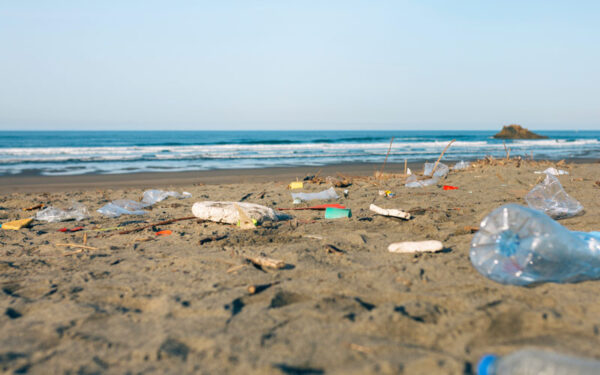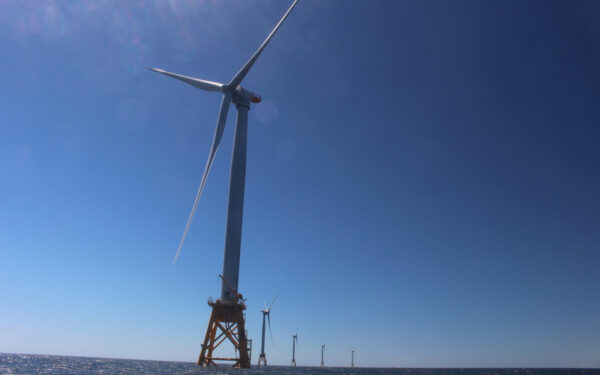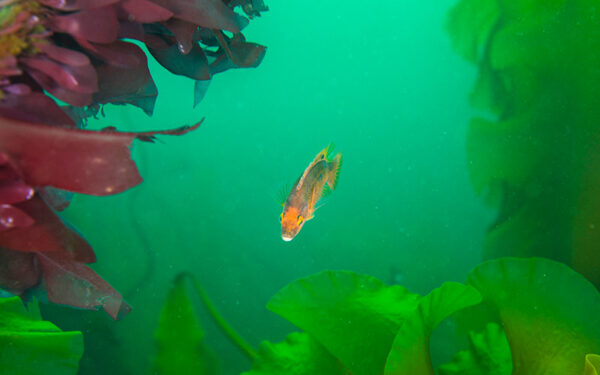From surface to seafloor, the canyons and seamounts off New England’s coast are spectacular. The canyons cut thousands of meters below the sea’s surface, while the seamounts rise like mountains from the ocean floor. Together, they provide a home for all sorts of marine life, from the ancient deep-sea corals that grow in shades of pink and orange to the blue whales, the largest animal on earth, that swim at the surface.
Three of the canyons and four of the seamounts are protected as the Northeast Canyons and Seamounts Marine National Monument. This week, we’re celebrating four years since President Obama designated this unique part of our ocean as the Atlantic’s only marine national monument.
This anniversary comes at a critical moment. This summer, President Trump proclaimed the Northeast Canyons and Seamounts open to all commercial fishing. This announcement is illegal, and we’re suing the administration for the reckless rollback. Beyond the fact that no president has the power to undo monument protections, we know we need to protect more of our waters, not less.
New England’s ocean, like all ocean waters worldwide, is at extraordinary risk due to climate change and the unsustainable human uses of its resources. We’ve known this for years, but recent sobering reports drive home the urgency: Three-quarters of the planet’s lands and two-thirds of its marine environments have been “significantly altered” by human activity. An estimated one million species are threatened with extinction, including about a third of sharks and shark relatives, a third of reef-forming corals, and over a third of marine mammals. Here in New England, the Gulf of Maine is warming faster than 99% of the world’s ocean waters, harming our fisheries like Atlantic cod.
These numbers are frightening, but if we act now, we can protect the planet, our ocean, and the natural places and wildlife we love.
A local response to a global crisis
CLF is part of a growing movement of scientists, policymakers, businesses, and conservation organizations in the United States and around the world calling for the global protection of at least 30% of land and 30% of the ocean by 2030 (30×30, for short). We must create more areas like our marine national monument where wildlife can recover and thrive without the threat of commercial fishing, oil and gas drilling, and other industrial activities. (We also need more land monuments, like Maine’s Katahdin Woods and Waters National Monument, which is also celebrating its fourth anniversary this year.)
Based on the marine protected areas already established worldwide, we know that setting aside parts of the ocean leads to healthy marine life, which fuels an abundance and diversity of life in adjacent waters. That, in turn, supports our ocean economy, including commercial and recreational fishing and whale watching.
In the United States, 30×30 should be a national goal that is planned and implemented on a local and regional basis. Federal legislation has already been proposed in the House and Senate to establish this crucial target. New England Senators Richard Blumenthal (CT) and Elizabeth Warren (MA) co-sponsored the Senate bill.
Approximately 26% of our nation’s ocean waters are currently protected, but they are located almost entirely in the remote Pacific Ocean. In New England, our most strongly protected waters –the Northeast Canyons and Seamount Marine National Monument – are now at risk because of the Trump administration’s illegal rollback. Other important areas in New England’s ocean, such as Cashes Ledge and Stellwagen Bank, do not have the full protection they need and remain at risk from destructive human activities.
A decade to act
It’s time to change that. Due to climate change, scientists and fishermen are witnessing many species, including iconic lobsters and North Atlantic right whales, make dramatic shifts northward to seek cooler waters. And for those of us who spend most of our time on land, we can see the higher tides and coastal flooding that increasingly accompany every Nor’easter.
Protecting the ocean is not just about safeguarding ocean wildlife for the sake of biodiversity. It’s also about protecting the marine life that fuels a thriving blue economy. When fish thrive, so do fishing communities. Atlantic cod, for example, has been overfished for decades, and its population remains dangerously low. However, protected areas can safeguard its spawning grounds, juvenile habitat, and the large female fish so crucial to the recovery of the species. Such areas also benefit fishermen casting their nets nearby: The fish living and thriving in protected areas spill over into neighboring waters where they can be fished.
What’s more, when our humpback, right whale, and fin whale populations thrive, so does our whale watching industry. This not only provides an economic boon for coastal communities but also introduces many people to the wonders of our ocean in ways they could not otherwise experience.
You can be part of the solution
As we celebrate the Northeast Canyons and Seamount’s anniversary this year, we’re both defending our monument and looking to a future with more marine protected areas. You can join us in working to protect our ocean and planet.
Call your Senators and Representatives and ask them to support protecting at least 30% of our ocean waters. It’s not just for our right whales, coral, and cod. It’s for us.




